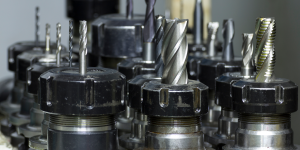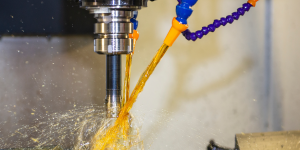CNC milling uses computerized controls and multi-point spinning tools to remove material from the workpiece. The only reason for the popularity of this technique in car, aerospace, and electronics industries is efficiency and precision.
CNC milling is a significant tool in production. CNC milling has revolutionized the process of component creation by meeting the challenges of creating complex shapes and designs with accuracy. Such a machine can carry out manufacturing tasks that would otherwise be impossible or requires a lot of labor and time. CNC milling’s automation and its ability to repeat operations make it superior to traditional milling. The production systems may be set up so that CNC milling machines follow the same patterns and execute repeated accurate cuts for consistent results. This is because human error is omitted and consequently, there are no product failures.
Understanding CNC Milling
CNC milling is multifaceted, and it involves numerous processes for the production of a desired component. CAD programs typically generate the part design first. A design is converted into a CNC program by the CAM software. The spindle holds the cutting tool, the worktable secures the workpiece, and the axes regulate the movement of the cutting tool in a CNC milling machine. These axes can move in various directions in a number of directions, allowing for more intricate cutting and shaping.

The production of various CNC milling machines is done for different applications. Among these, we have vertical, horizontal, and gantry mills. The machine selection heavily depends on the workpiece size, shape, and accuracy. CNC milling machines can mill aluminum, steel, titanium, plastics, and composite materials. Strength, weight, and durability are the main parameters to consider while choosing the material the component is made of.
CNC Milling Machine Preparation
The machine safety should come first since it is used in a CNC milling machine. Such safety equipment as gloves and eyewear should be worn and the machine should be grounded to eliminate the risk of electrical hazards. Dust removal and proper care are essential to keep CNC milling machines running. Discard chips and foreign objects from the workspace, oil up moving parts and examine for damage. Routine maintenance can even expand the lifecycle of equipment and prevent expensive failures.
Calibration and precision of milling are the features that must be followed. Before milling, make sure that alignment of the machine and errors are checked. The measuring devices that exhibit high accuracy are used for this task, for example, dial indicators and laser alignment devices. Prepare the surface by removing any ripples. Once the CNC milling machine is ready, materials are loaded. Fixtures should clamp the workpiece to the worktable. Vises could also be used The parts must be correctly oriented with the cutting tool to prevent milling errors and damage.
CNC Milling Program Setup
CNC programming will be the crucial element of the CNC milling machine setup. It demands programming the machine to move and cut the piece of work. The machine operations are controlled by programming languages such as G-code and M-code which are a part of CNC. Generating a CNC milling program is done by using CAM software. CAM software gives the user the ability to construct toolpaths based on the design of the part. CAM system determines the best program for the cutting tool, material, and process characteristics.
Having finished writing the CNC program, you need to load it onto the machine. The same information can be stored and shared with the help of flash drives or USB or Ethernet connections. First of all, run the program to make sure if there are any errors and also check for inconsistencies before milling.
CNC Milling Tool Setup and Selection
The most suitable milling tools are the key to obtaining the best results. E.g., end mills, face mills, and ball mills have been developed for specific applications. The selection of milling tools must be based on the type of material, surface finish, and machining parameters. Precision is one of the key steps of the CNC milling machine tool installation process. Tool holders or collets must thus secure the tool in the spindle. The instrument should be positioned correctly with regard to the workpiece and also needs to have enough room to move during the milling process.
Milling efficiency can only be achieved by optimizing the tool path generation. This can be done by calculating the best toolpath based on the cutting rate, the forces exerted on the machining tools and the life of the tool. The tool path optimization will reduce machining time and increase productivity.
Perfect Component CNC Milling Methods
A myriad of milling techniques can provide the components with the necessary accuracy. Example: contour milling is a machining process where a part is cut along its outline to produce a specific shape or profile. Pocket milling is the process of taking out the material from a pocket or a cavity on a workpiece. Drilling is an operation, which consists in creating holes in the workpiece.
Achieving a good milling performance requires adhering to a set of best practices. This encompasses the choice of optimal cutting parameters, for instance, cutting speed, feed rate, and depth of cut, depending on the particular workpiece material. Besides that, close monitoring and alteration of the methods in the process can be the key to success.

Troubleshooting of CNC milling problems is another important thing that the CNC milling involves. Tool wear, surface quality leaving a lot to be desired, or dimensional inaccuracy are the issues that can be noticed during milling. By means of getting to the root causes of the issues and applying corrective actions to them, manufacturers will be able to reduce waste and this, in turn, will result in a better quality of products.
Post-milling inspection and quality control
After the milling process, there should be an inspection that will contribute to the production of correct and exact milled components. Visual inspection is done to see if there are any physical defects on the surface of the material or not. The use of measurement instruments such as calipers, micrometers, or CMM, can be applied to verify the accuracy of the dimensions.
The quality control measures must be set up so that milling results would not vary with each instance. This implies the adjustment of the CNC machine which entails the calibrating of the CNC system, for example, to enhance the accuracy and repeatability of the machine. Besides this, quality management systems, like ISO 9001, are expected to be implemented by it for standardizing all the processes and management that is going to be made. The taking and the recording of the milling outcomes is the key problem of traceability and transparency. The records should be kept by putting down all milling processes, tooling settings, and inspection results. A miller can have a clear picture of what is going wrong and the trends by simply recording the whole milling process. The feedback can be used to guide the process to take the necessary corrective measures.
In conclusion, CNC milling is a demanding process that the operator must consider preparing the machine, creating the program, and executing the job properly to get the desired results. The companies are able to get accurate and less error-prone components by adhering to the previously outlined step-by-step guide. The incorporation of computer numerical control (CNC) milling machines has revolutionized the business of manufacturing by making possible a high degree of precision and operational effectiveness which were previously unobtainable with conventional milling methods. Along with the innovation of technology and the research of this sector, CNC milling will remain an irreplaceable element in the creation of a variety of industrial components.
